Living life in two forms, as members of the Odonate family do, I spend countless delight-filled hours peering into water for their naiad forms and watching them eclose upon vegetation. I so appreciate their flying acrobatics as they defend territory and, of course, their preference for smaller flying insects such as the ubiquitous deer flies and now a second hatching of mosquitoes.

This summer I’ve had the pleasure of standing upon boardwalks and other edges of ponds and streams as the naiads have literally decided the temperature is right and that particular day is the day that they are going to make the great transformation from aquatic to land form.
And I’ve been especially tickled when an Emerald or two or three, thought my boot was the perfect place to climb in order to split open its thorax and step out of its former self.
Earlier in the season, hundred upon hundreds seemed to emerge at the same time, and now we aren’t see as many as they’ve become bird food, passing energy gained from the insects they ate on to the birds who eat them.
By the color of the eyes, markings on their thorax and abodomen, and shape of the latter, I’ve been teaching myself, or rather the dragonflies have been teaching me their names, some of which I actually remember from one year to the next, this being the Racket-tailed Emerald. What distinguishes it from the Kennedy Emerald, at least for me, is the shape of the abdomen that rather resembles a tennis racket, unlike the long and slender tail of the latter.
Upon arriving “outta” rather than “upta” camp late yesterday, I plucked a few different exuviae from the foundation, in awe of the journey they each made since it’s about twenty feet from the water’s edge. Emergence is such a tenuous time, exiting the watery world, crawling to just the right place, and then beginning the process of shedding ones old ways for a new form–a time when they are most vulnerable. And so I am honored that they chose our little place and hope it provided the protection they needed.
Another who honored me recently was a Variable Darner, its hues of blues and greens among my favorite color combo. Capturing a photo of a Darner is no easy task, and so I was amazed that this one actually posed. Notice the thin black line across its face–a clue in the identification. (And I hope I’m correct on the actual species)
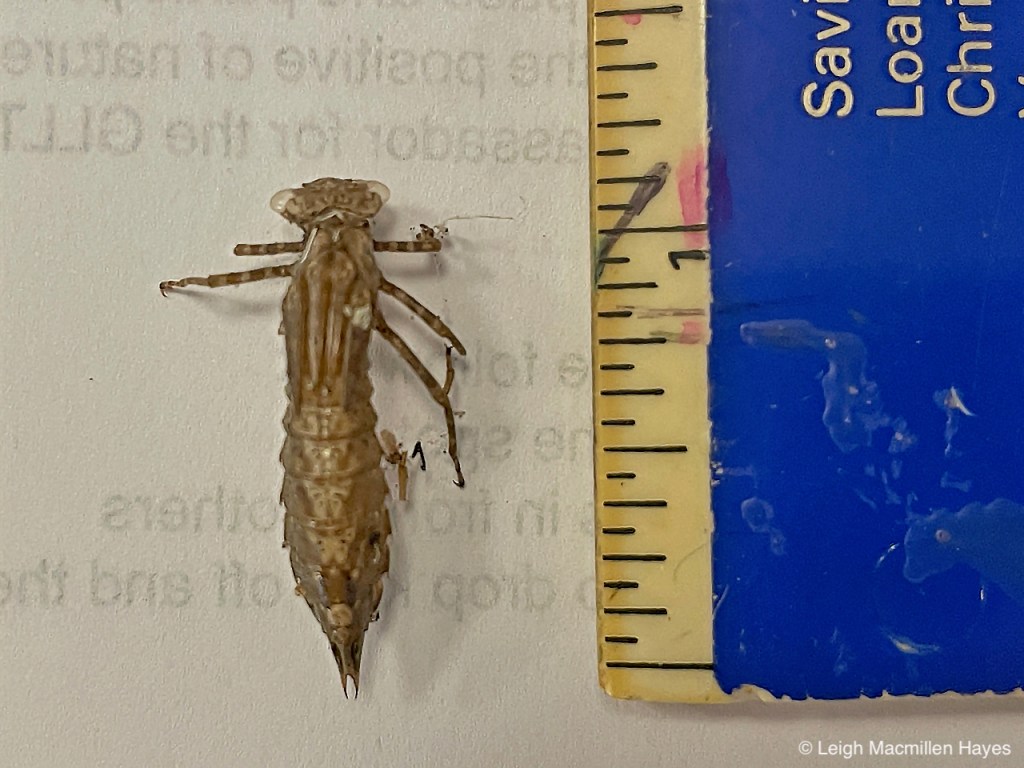
The Darner’s naiad form is long and thin as compared to most of the others.
This is a crisper look. I love the clear bubbles where the eyes had once been. And the wing pads that form during the last instar before the critter climbs out of the water.
Next up on the plate is a member of the Skimmer family. There are so many, many members of the Skimmer family, and Maine hosts quite a few of them. This is the Spangled Skimmer, a female by gender. She and her mate are the only ones with white stigmas on their wings, so if you spot a brown and yellow female or a blue male with the white you’ll be able to identify them immediately. Or share a brain with someone else as so many of us do.

Another Skimmer I recently met for the first time, or so I think, is an immature Blue Dasher. In Dennis Paulson’s Dragonflies and Damselflies of the East, I read that those red over gray eyes will turn green with age (not envy).
Here’s another look at its abdomen because it was the two rows of stripes that clearly helped me feel confident about this identification.
And I would feel remiss if I didn’t include this beauty, despite that fact that many of its ancestors have graced wondermyway.com in the past. What not to admire about this female Calico Pennant Skimmer? Those stain-glassed wings with yellow stigmas and the yellow hearts on her abdomen. Her honey is adorned in the same pattern, only with red where she displays yellow.

This is the shed exuvia of a Skimmer, perhaps one of the Slaty Blues that I didn’t photograph as they defended their territory late yesterday afternoon. I looked to see if anyone was flying today, but found the water’s edge to be rather quiet in the midst of so much rain.
The shed skin of this Stream Cruiser I did not find because this isn’t the right habitat for the oreo cookie of the dragonfly world. But . . . I just like to look at it and smile each time I encounter one.
What I have found recently, and also brings a bit of a thrill to my mind, is a Dragonhunter Clubtail.
These are the mighty monsters of the Odonata world, and they’ll even consume other dragonflies.

And here is the exuvia, which Paulson describes as “wide, flat larva that resembles a wood chip.” The legs alone speak to its strength; formidable in the water and out.
And the cool thing is that sometimes when you are hunting for dragonflies like the Dragonhunter, others make their presence known and you capture them in photographs rather than your jaws. The Bi-colored Sweat Bee didn’t have to worry about me.






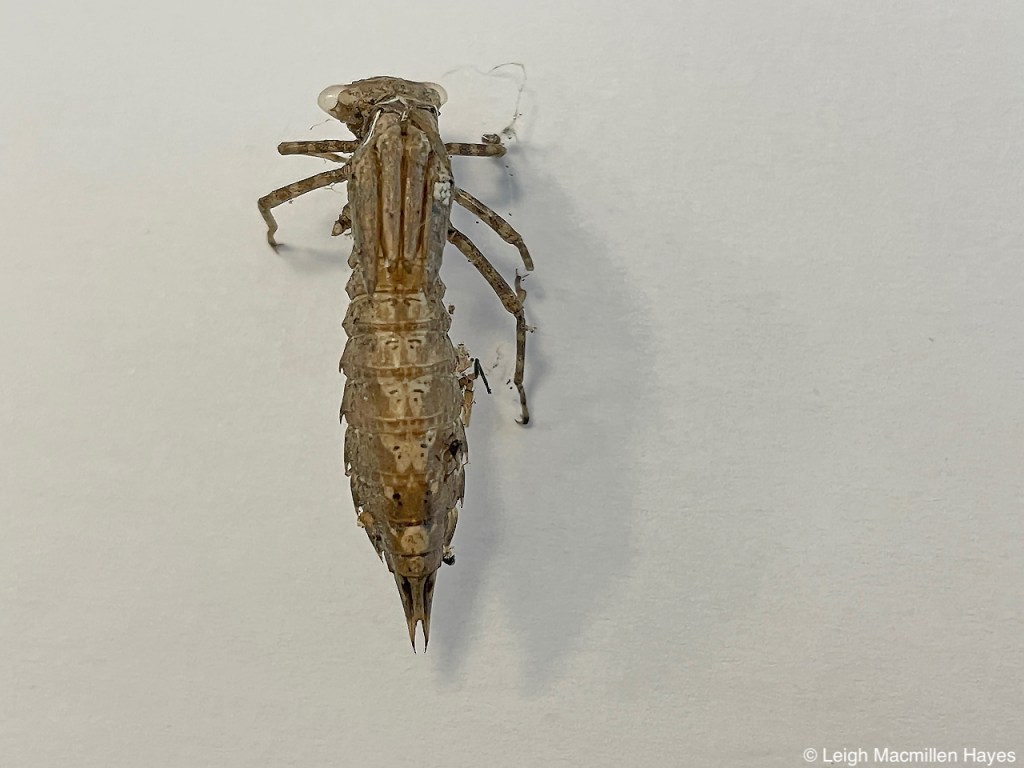


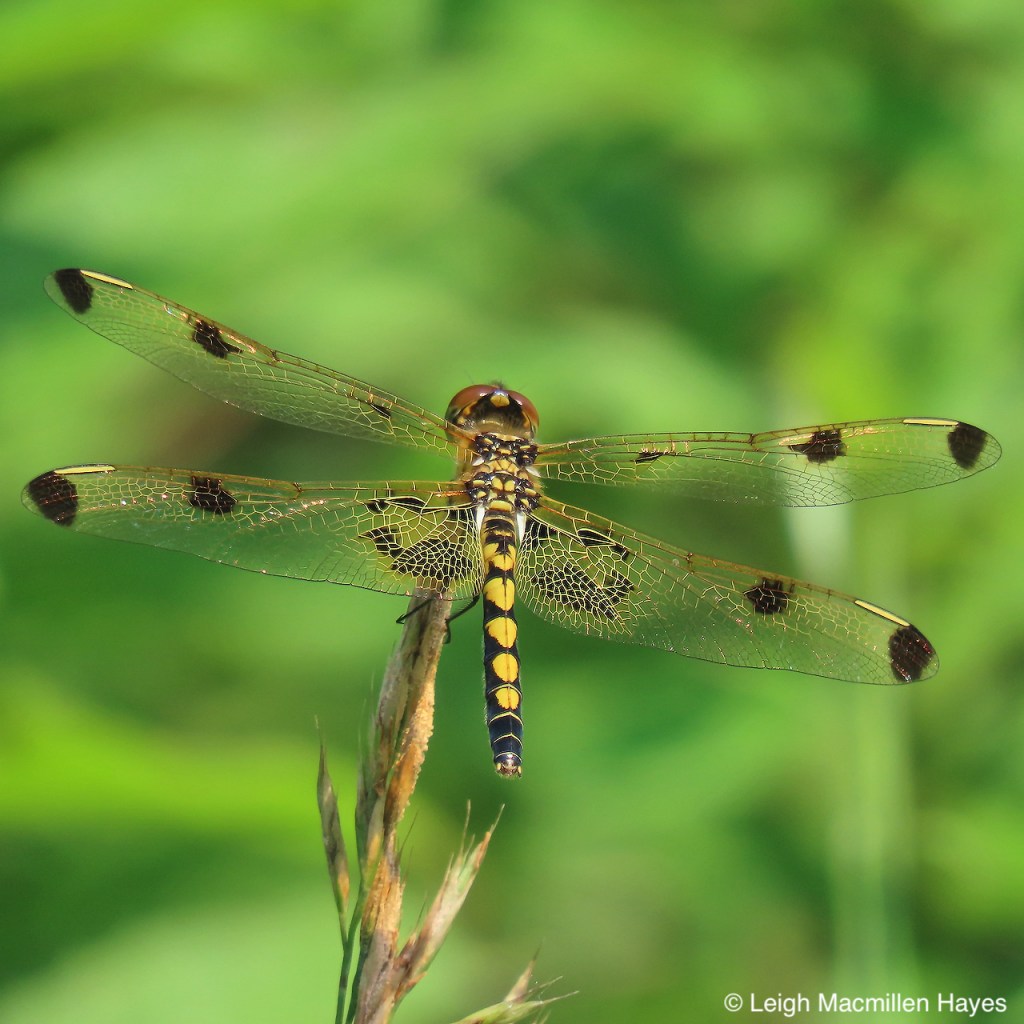
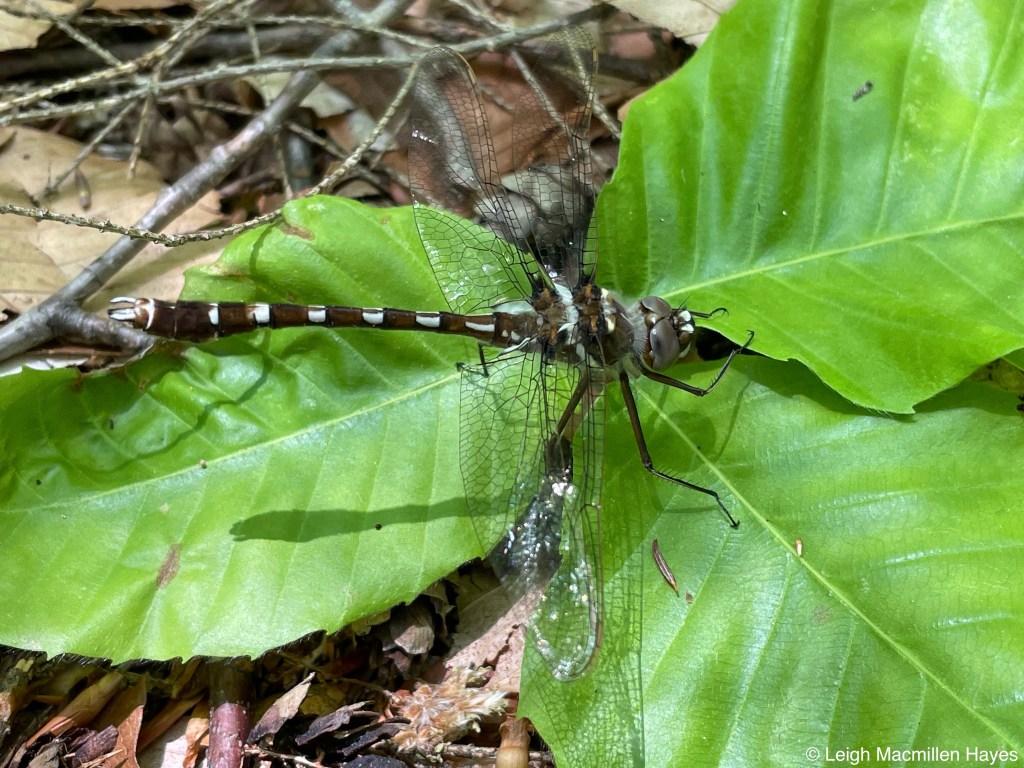

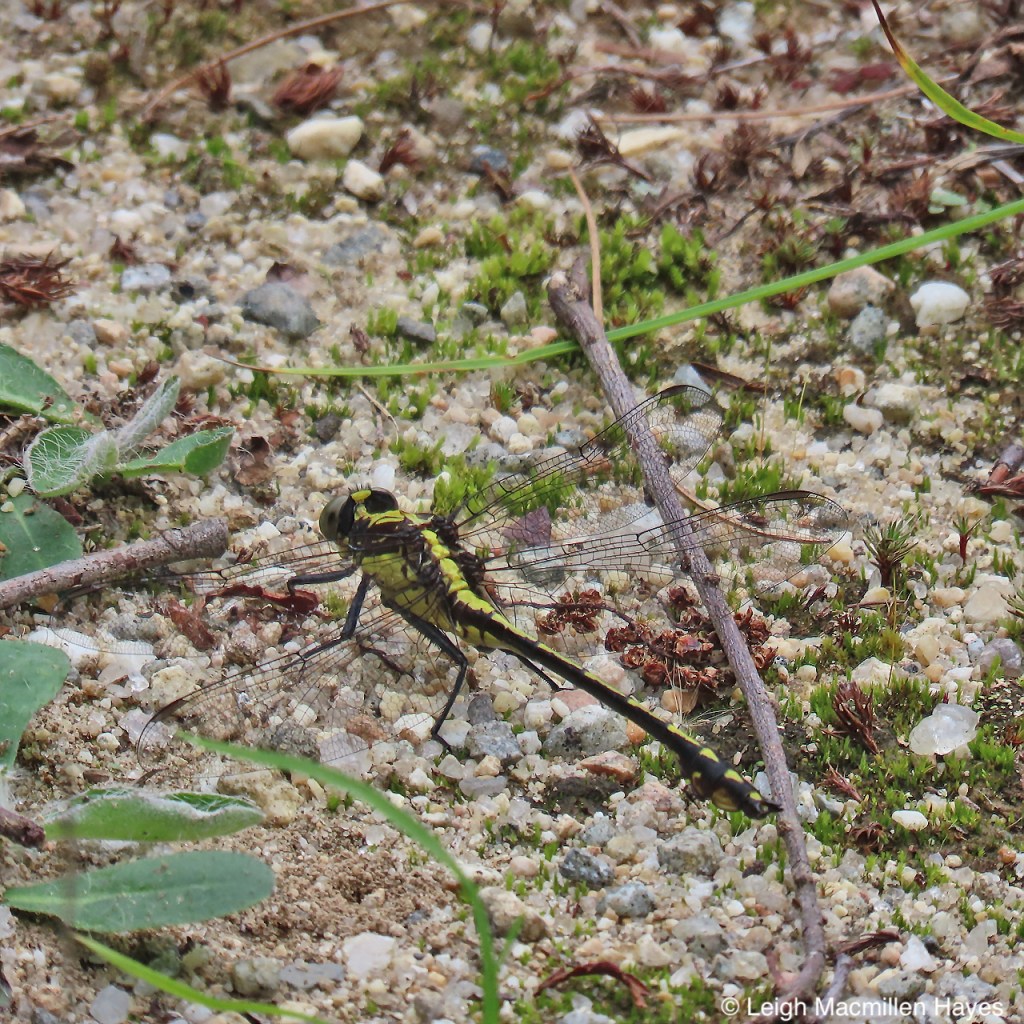

One thought on “Hunting for Dragons”
Comments are closed.